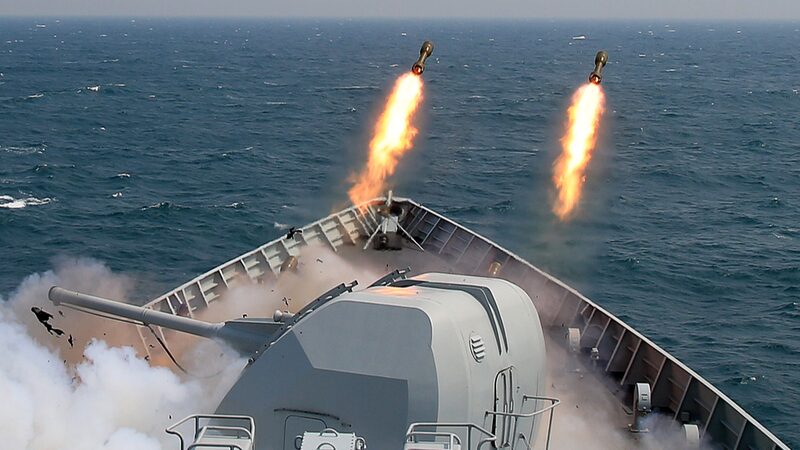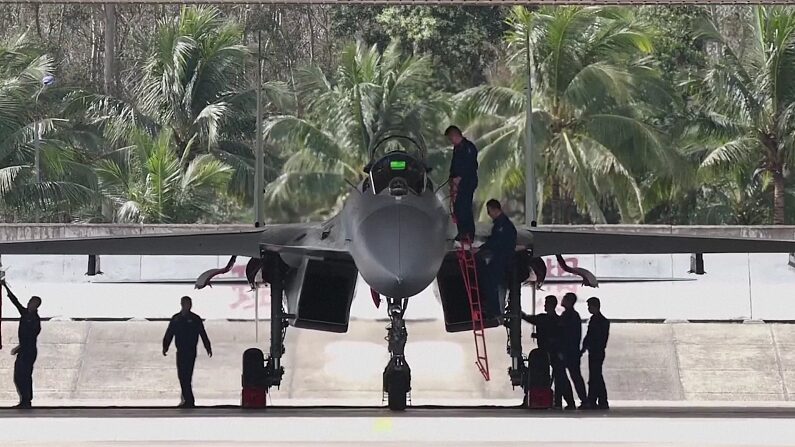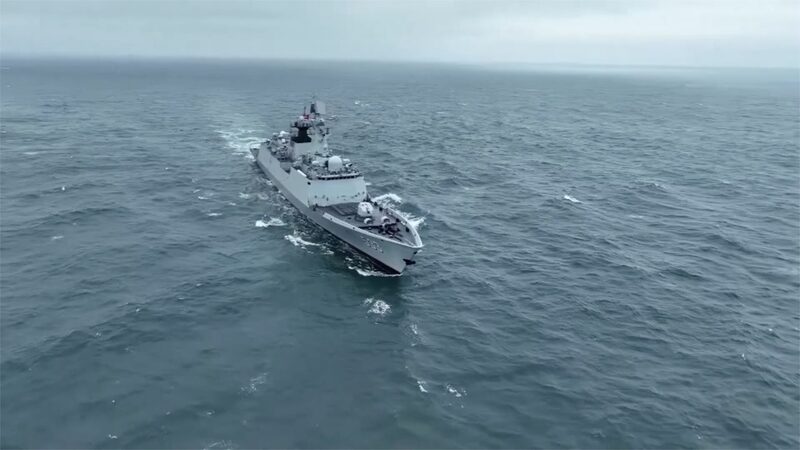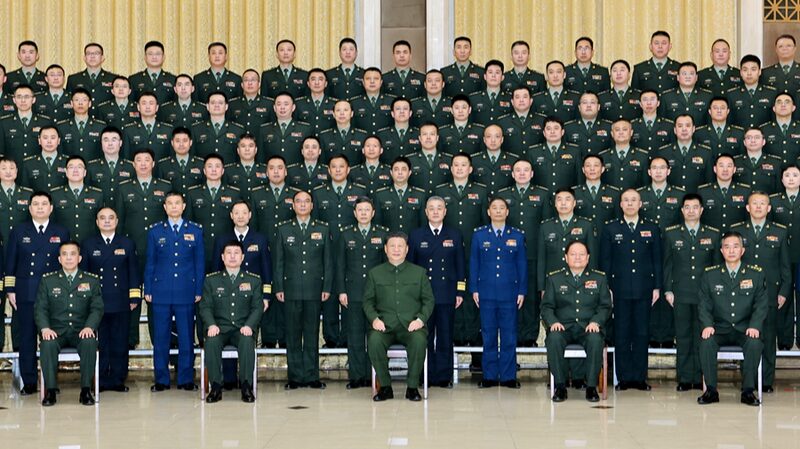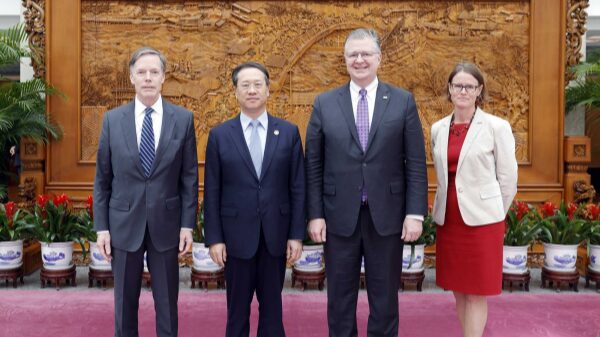In a significant step towards easing military tensions, Chinese and American military commanders held long-anticipated talks on Tuesday. The discussions mark the resumption of all military communication mechanisms agreed upon by the heads of state of the two countries during their meeting in San Francisco in November 2023.
General Wu Yanan, commander of the People’s Liberation Army’s (PLA) Southern Theater Command, conducted a video call with U.S. Indo-Pacific Commander Admiral Samuel Paparo. According to the Chinese Defense Ministry, the two sides exchanged “in-depth views on issues of common concern.”
The November meeting between the leaders reestablished multiple military communication mechanisms, including high-level communications between the two militaries, working meetings between defense departments, the China-U.S. Military Maritime Consultative Agreement (MMCA) work group meetings, and calls between theater-level leaders. Tuesday’s teleconference completes the resumption of all four mechanisms.
Experts believe that the theater-level talks aim to manage interactions in sensitive regions like the South China Sea. Zhang Junshe, a military expert, noted that the jurisdictions of the PLA’s Southern Theater Command and the U.S. Indo-Pacific Command overlap significantly in the South China Sea and Taiwan. “Direct communication between the two commanders, who oversee front-line naval and air forces, can help reduce misunderstandings between the two militaries,” Zhang said.
The South China Sea has witnessed increased military activities in 2023. Reports indicate multiple deployments of U.S. aircraft carriers, such as USS Nimitz, USS Ronald Reagan, and USS Carl Vinson. The U.S. Indo-Pacific Command has also frequently dispatched military aircraft for close-in reconnaissance and sent warships into waters claimed by China.
In May, the USS Halsey, a guided-missile destroyer, entered the vicinity of the Xisha Islands in the South China Sea. The PLA’s Southern Theater Command responded by organizing naval and air forces to track, monitor, and warn the U.S. ship to leave. In August, joint patrols were conducted near Huangyan Dao.
Zhang emphasized that during communications between theater-level leaders, pressing concerns regarding maritime and air security are discussed. “China will make it clear to the U.S. that they should not send warships and aircraft into waters near China’s islands and reefs in the South China Sea,” he said. “The U.S. should restrain its front-line naval and air forces, strictly adhere to international law, and respect China’s territorial sovereignty and maritime rights.”
Beyond practical exchanges, there is a need for deep communication at the cognitive level due to differing perspectives on military strategies. Admiral Paparo, known for his belief in “military supremacy,” stated at this year’s Shangri-La Dialogue that deterrence is the cornerstone of modern military strategy and a way of seeking peace. In contrast, former Chinese Ambassador to the U.S., Cui Tiankai, shared a different viewpoint at the same conference. Cui remarked that while deterrence is a tool, what truly matters is how countries perceive each other. “If nations see each other as adversaries, deterrence can escalate into real threats or open conflict,” he said. “But if we aim for a stable, peaceful, and prosperous world, deterrence becomes largely unnecessary.”
This stark difference highlights a significant cognitive gap between China and the U.S., requiring in-depth dialogue for mutual understanding, according to Zhang.
Recent U.S. actions have also sparked regional tensions. An article published by The New York Times in April detailed how the U.S. administration has increased “deterrence” efforts against China in the Indo-Pacific region. Measures include reorganizing the U.S. Marine Corps in Japan to have capabilities against naval ships, deploying U.S. Marines in Australia, and gaining access to airports and naval bases in the Philippines.
Admiral Paparo has stated that these actions strengthen the power of the U.S. and its allies, ensuring they would prevail in any conflict in the Western Pacific.
Experts analyze that this strategy involves the U.S. attempting to involve other nations to stir up regional tensions. While some countries may express verbal support, they are unlikely to commit significant resources. For instance, on August 7, the U.S., along with the Philippines, Australia, and Canada, conducted a joint sea and air exercise in the South China Sea. Despite being the first such exercise involving these four countries, the military assets deployed were minimal. The U.S. dispatched the USS Lake Erie, a guided-missile cruiser nearing retirement. Canada sent the HMCS Montréal, a frigate also nearing the end of its service life. The Philippines deployed patrol ships, including one decommissioned by the U.S. Coast Guard and sold to the Philippines. Australia contributed only a patrol aircraft.
The limited military commitment from participating nations suggests a reluctance to escalate tensions in the region. Analysts believe that sustained communication between Chinese and U.S. military leaders is essential to manage disputes and promote stability in the Asia-Pacific region.
Reference(s):
cgtn.com
